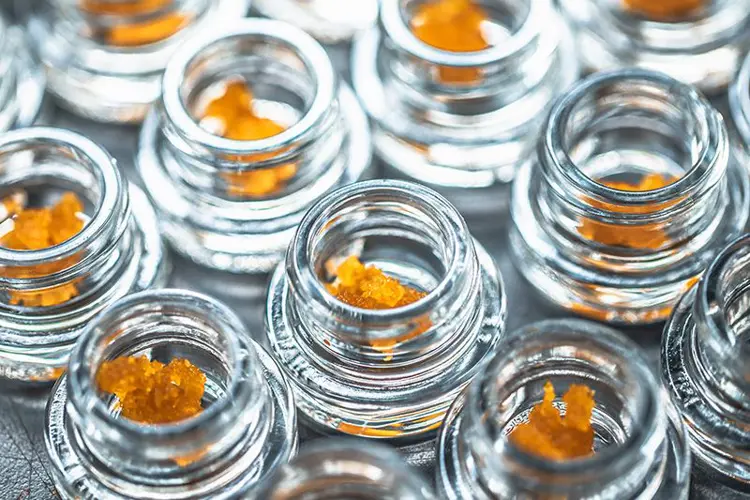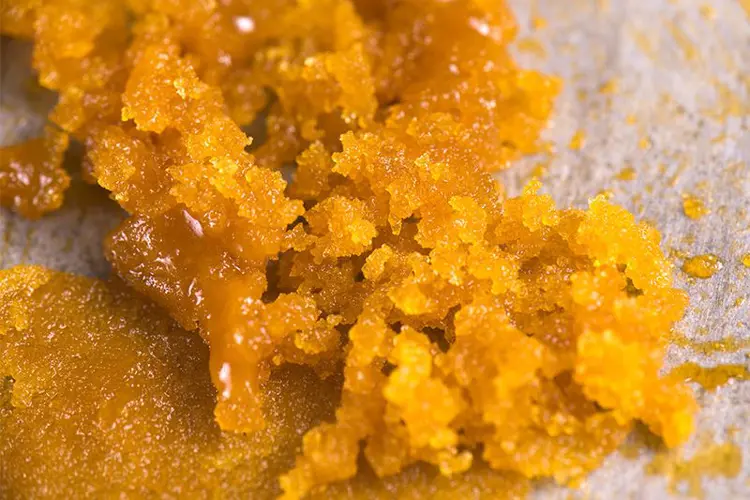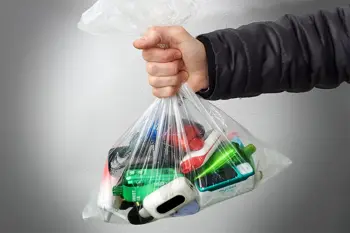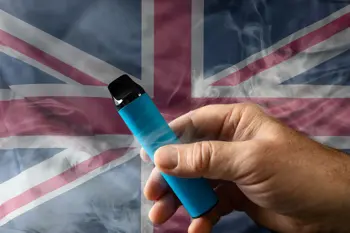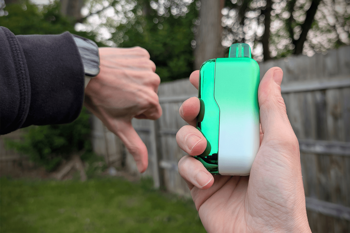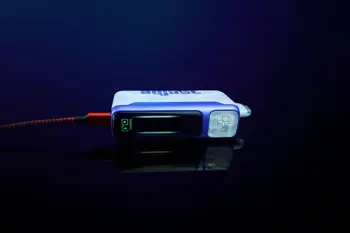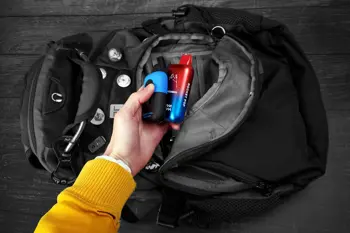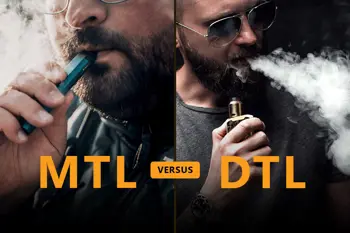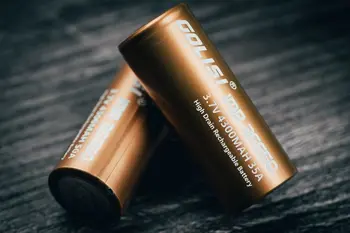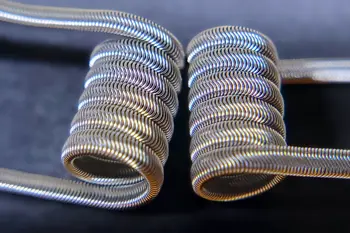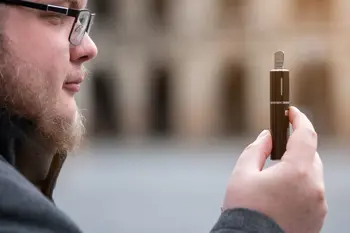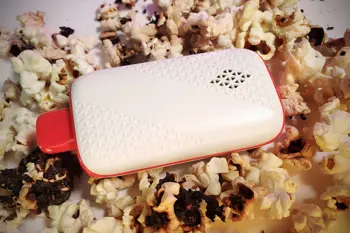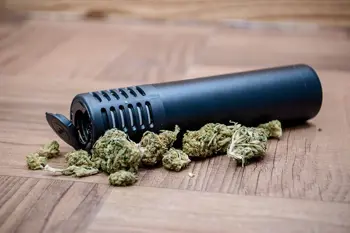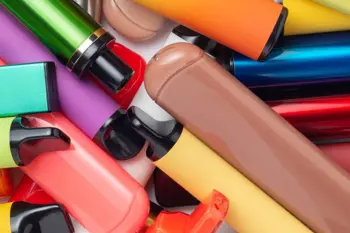Distillate and live resin have been big names in the cannabis space for a while now—just take a look at and the menu in any dispensary. Although cannabis-derived distillates are a tried-and-true staple, live resins have seen increased notoriety over the past couple of years.
Before determining which kind of weed cart is best for you, it’s wise to weigh the pros and cons. Both types of carts have benefits and drawbacks that should be considered. Neither is a superior all-around option.
Here’s our breakdown to make that decision easier, depending on your individual needs and preferences. Like many of us, you may fall somewhere in between and find both options enjoyable.
What is a distillate cart?
A weed distillate cart is created through, of course, the process of distillation.
The process of distillation allows a particular cannabinoid to be separated from the many compounds found in cannabis (either marijuana or hemp). Distillation strips out all the non-cannabinoid plant material, including terpenes and flavonoids. Those may be added back into the oil after distillation to improve flavor and aroma.
Depending on the oil, processors can choose between a range of cannabinoids to concentrate on. Delta 9 THC (generally referred to as just THC) is the most popular example. Still, distillates are an option even if you’re not looking to get high. CBD carts containing distillate have become a go-to option for a plethora of vape enthusiasts. Other options include delta 8 distillate, CBG distillate, and others.
How does cannabis distillation work?
The distillation process looks similar whether you’re focusing on marijuana (THC) or hemp (CBD and its derivatives like delta 8). Temperatures vary depending on the cannabinoid being isolated.
Distillation begins with a process known as crude extraction. Both chemical and physical methods exist to complete this initial step, where resinous trichomes are separated from unwanted plant material. Common solvent extraction processes include butane and CO2.
Next comes winterization. The goal during this stage is to begin purifying the extract and further isolating the desired cannabinoid. Winterization removes unwanted plant products like waxes, lipids (fats), and chlorophyll.
Refinement continues with decarboxylation, using heat to convert the extracted compounds into activated cannabinoids.
After all of these steps, the distillation of the extract can finally occur. Heat and vacuum pressure are employed to create the final, highly pure cannabis distillate.
The pros and cons of weed distillation
We’ve already mentioned distillate’s biggest pro a number of times—the isolation of a pure cannabinoid product—since it’s a huge reason the complicated distillation process is performed in the first place. But how pure is this extract, and what other benefits are there? Distillate cart cons also need to be addressed.
Cannabis distillates: benefits
One of the top perks of distillation involves cannabinoid purity. For instance, THC or CBD distillate may be as much as 95% to 99% pure, without excess plant matter, other bioactive and inactive compounds, and other materials diluting its effects.
For perspective, unprocessed marijuana flower typically contains less than 30% THC. This makes distillate carts one of the most potent methods of consumption.
If you prefer oil that isn’t overly pungent, distillates can be a fantastic option. Assuming terpenes and other compounds haven’t been reintroduced, pure distillate has very little smell and flavor. This is a downside to some vape users, but it’s desirable to those seeking a milder experience on the palette, or seeking to use a vape stealthily.
Drawbacks of distillate carts
One downside to premium distillate carts is the cost. The distillation process is meticulous, all with a byproduct that’s desirable to many consumers. Even a more affordable distillate cart could cost around $25, with some half-gram carts costing closer to $40 or so.
The inevitable loss of terpenes and flavonoids can also be seen as a con. In order to isolate a cannabinoid like THC or CBD, flavorful terpenes need to be sacrificed. Unlike live resin, distillate doesn’t taste like the weed it came from.
Even if terpenes are added back into the final distillate, this isn’t the authentic taste and aroma of the original extract. For some, this can be off-putting, especially if experiencing bold, natural flavor is a priority.
What is a live resin cart?
Like the distillate carts we’ve just discussed, live resin is a high-quality extract with a complex production method. However, these carts offer a much different experience and profile.
Live resin is a concentrate with a high volume of terpenes and cannabinoids. Rather than isolating a specific compound, live resin utilizes the whole cannabis plant to create a liquid with a range of bioactive and inactive compounds and plant material. In fact, the chemical profile of live resin is extremely close to what’s found in the original plant.
Although live resin has been around since 2010, it’s seen increased popularity with the growing legalization of cannabis. This has led to innovation and shifted focus onto more specialized extraction methods.
How is live resin produced?
Either fresh or fresh-frozen cannabis plants can be used to create live resin. Prior to production, this raw material does not need to undergo decarboxylation or other processing.
The goal throughout live resin production is to preserve as many terpenes as possible. This means that the process begins as soon as the leaf is cut from the plant, as terpenes can begin to diminish quickly. Drying and curing the plant, as is done to prepare flower for smoking or vaping, actually causes a 60% loss of terpenes.
Marijuana plants are frozen to preserve those compounds until processing can be done. The frozen cannabis requires careful handling due to the plant’s trichomes (resin glands) becoming brittle in these conditions. Resin glands—which are often called crystals because of the glistening appearance they create on the surface of the flower—are what contain the terpenes, as well as cannabinoids like THC and CBD.
Due to the thawed plant’s high water content, live resin extraction must occur at cold temperatures. Butane is used to extract the materials, though this chemical must first be frozen at a temperature between -20° and -50° F.
A closed-loop extractor can then apply pressure and freezing temperatures to remove terpenes and cannabinoids from the cannabis plant. Unwanted fats, lipids, and waxes are removed in the dewax chamber before the solution is boiled. The resulting product is called live resin, and can be further processed into oil for vaping—sometimes called liquid live resin (LLR)—or into waxy concentrates for dabbing.
The pros and cons of liquid live resin (LLR) carts
Still unsure whether live resin carts are for you? Here’s a rundown of this extraction technique’s most common pros and cons.
Live resin carts: benefits
Live resin carts are ideal if you’re seeking a terpene profile that’s authentic to the raw plant. Unlike distillation, there’s no isolation of a specific compound, and every part of the cannabis plant’s flavor and cannabinoid makeup is left intact during extraction.
Naturally, live resins are renowned for their extensive terpene content and robust flavor. The plant itself contains over one hundred terpenes, including myrcene, limonene, linalool, and many others. In combination, these compounds form a complex aroma and flavor profile.
Although live resin contains the same range of compounds found in the plant, the actual THC content is higher. Live resin can be as high as 80-90% THC. Certainly lower than distillates, but this is still a potent concentrate.
Cons of live resin carts
It costs more to vape live resin carts versus “normal carts”—and sometimes they’re even pricier than distillates. This difference in price tag can be jarring for those new to these carts. But are live resin carts worth it? The answer is often yes, but it depends on where your priorities lie.
If the benefits we’ve described above appeal to you, then you may be willing to spend twice as much as you might on a standard vape cart. On the other hand, if you just want high THC content and don’t really care about the flavor, LLR likely isn’t worth the extra cost.
Also, if you’re looking to hone in on a specific cannabinoid, live resin carts aren’t ideal. By way of their production, they include a bit of everything, including a variety of cannabinoids.
Finally, vaping an LLC cart smells like weed. It may not go unnoticed in a public place.
Live resin vs distillate: is there a winner?
Those who prioritize flavor, taste, and aroma over everything else will certainly prefer live resin carts. These oils are created using all parts of the cannabis plant and maintain its complete chemical makeup. They’re packed with terpenes and make a powerful mark on the palate. The THC content is high.
Distillates are perfect for those seeking potent carts, especially if they’re interested in a particular cannabinoid. THC, CBD, and delta 8 are popular examples. When you use distillate carts, you aren’t going to experience the authentic flavor profile of the plant. Terpenes can be added back in after the fact, but due to the isolation of one cannabinoid, other compounds are stripped away.
Deciding between live resin or distillate carts comes down to personal preference. It isn’t actually a matter of which is better; both are premium cart types with detailed extraction processes.
